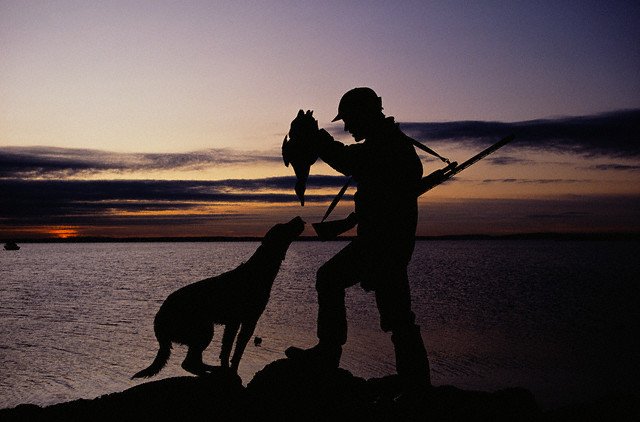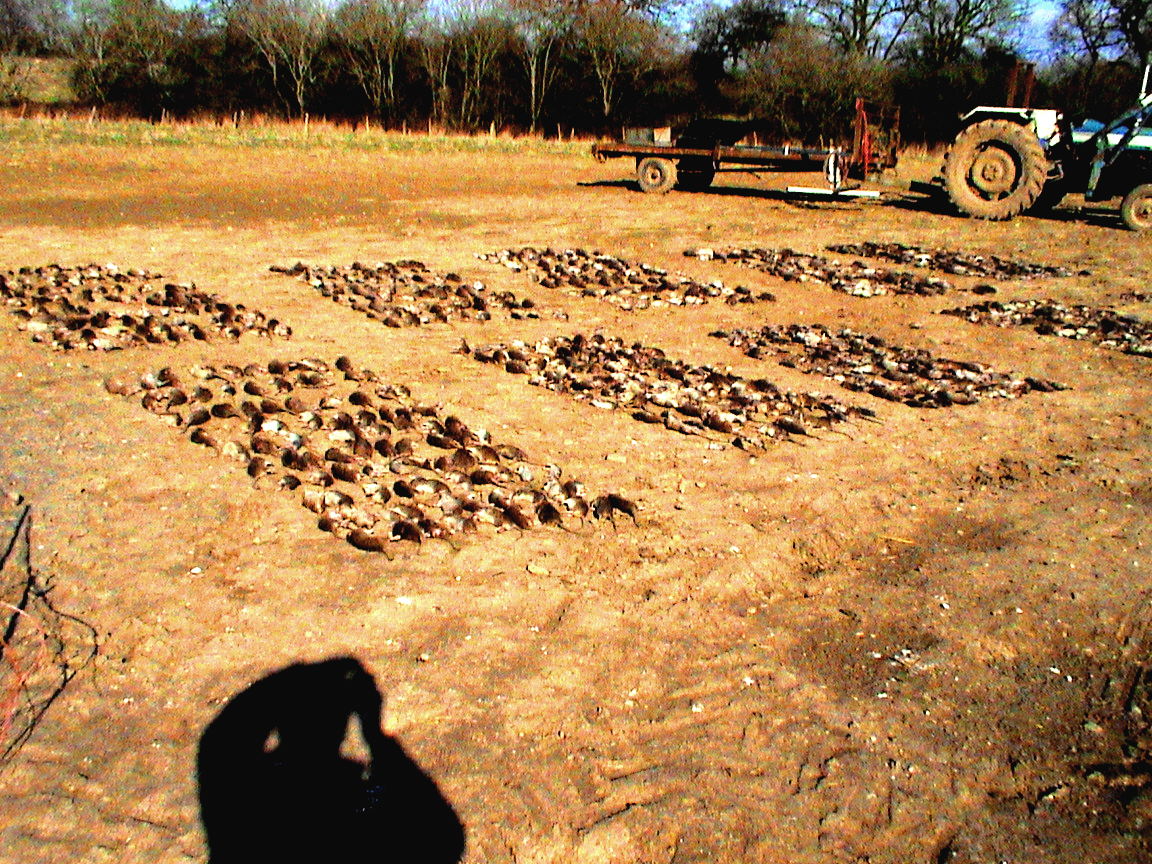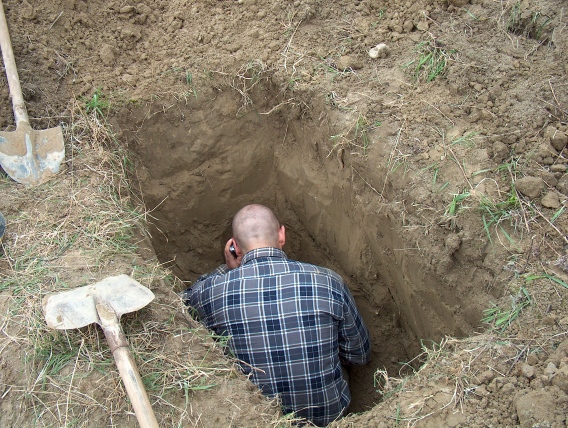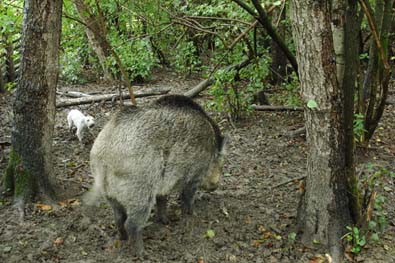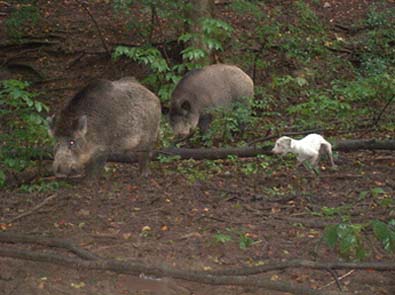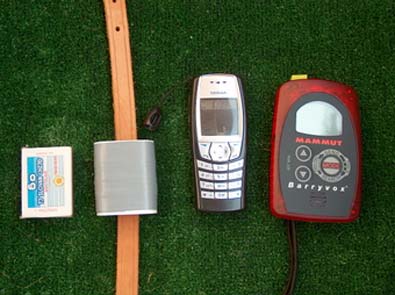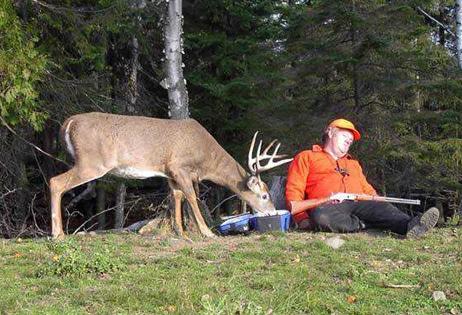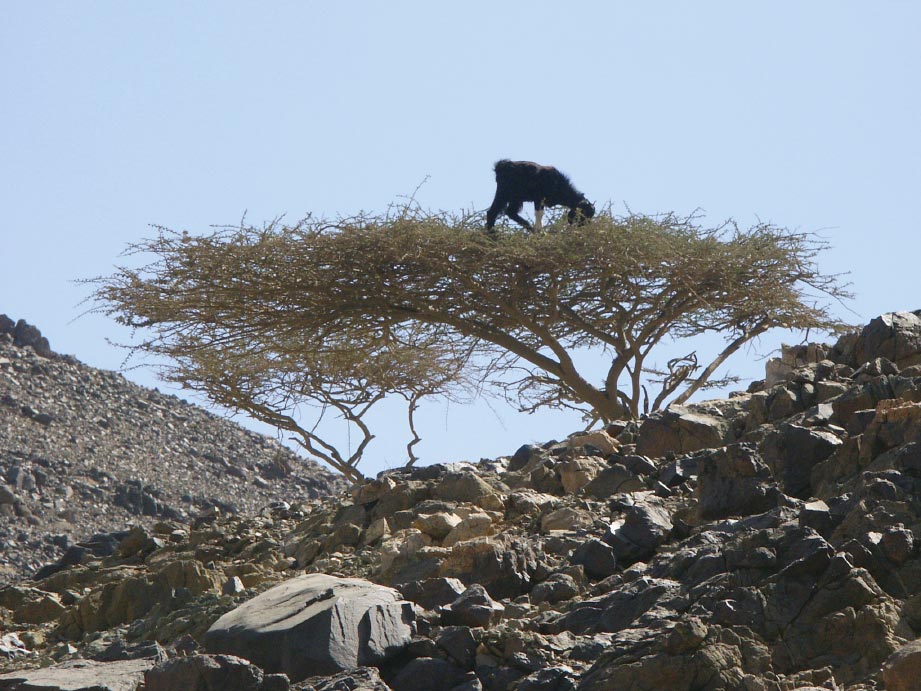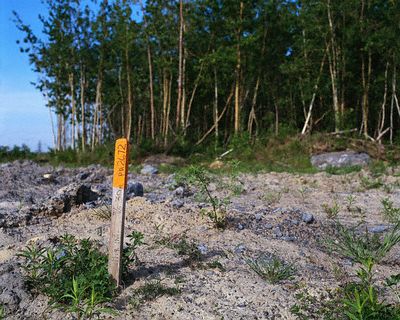Young Moxie rests in a dry creek bed. A very nice looking little dog.
In theory, June 21st is the longest day of the year. But, as Einstein so famously said, some things are relative and not everything unwinds according to theory.
June 24th had hours that seemed to last for weeks.
The day started out like any other, except that I had gone out for dinner with my wife and daughter the night before, and we had blown a tire on the Ford Expedition. Due to lack of a working jack, this proved to be a bigger problem than it should have been.
All of this is to say, I was a bit discombobulated that evening when I loaded the tools; one possible reason I showed up at the Flint Hill General Store the next morning with everything I needed except the locator collars.
A small problem, but not insurmountable. I have dug on the dogs without a collar before, and with the heat we were unlikely to find a skunk to ground. We would do it "old school" as best we could.
I was anxious to see Chris J., as he had picked up his first working terrier the week before from Tim J. who, in turn, had acquired the dog from an Amish fellow who had a small kennel of patterdales. The young Amish lad had subsequently come down with cancer and had to disperse his dogs.
Out of this tragedy came Moxie, an eight-month old female patterdale of wonderful proportions, a roughish coat, and a very calm disposition. I liked her straight out of the box, admiring her size and general diposition. A wonderful little dog.
I had brought Chris a short go-to-ground tunnel and a new six-foot digging bar, and we transfered both of these to his truck -- my gift to the new pup to get her started off right.
We set off with the dogs, headed down the edge of a rapidly growing cornfield on a narrow path just inside the wood line.
It was amazing what a few months had done to this section of land. Winter sticks and barren trees had fallen away to walls of thick vegetation. It was as if we were traveling down a green hallway, with Mountain ranging ahead (a greedy little dog that likes to find the hole first) with Sailor and Moxie padding along behind us.
We did not hunt the trail, as I had an idea of where we would locate quickly, and for once I was right. Sailor entered a nice one-eyed sette in a waste area with high vegetation, and began to bay. Bingo!
From the sound, I could tell Sailor was pretty deep. We stuck a stick into the sette to gauge direction and depth, and began to dig, but the ground was criss-crossed with shattered quartz mixed with hard pan, and it was very tough digging.
We dropped a four foot hole and barred, but could not locate the pipe.
Sailor came out and Mountain went in. This was a one-eyed sette, and with ground this hard the groundhog was not going to be able to dig away.
But there was some question as to whether we could dig in. We had no collar on the dogs, the ground was as case-hardened as a strong box, and I was not anxious to dig another four- or five-foot exploratory hole.
I suggested we pack it in, give this groundhog law, and see if we could find a shallower sette.
Which we did.
In the next hedgerow the blackberries were just beginning to turn, and there were quite a few holes. Sailor opened up in a large eight-eyed sette and either lost the groundhog or bolted it. Considering the thickness of the vegetation and the intensity of her barking very close to the surface, it was most likely a bolt.
We moved on.
At the base of a cluster of shattered trees on the edge of a scrub field Sailor slid in and opened up. A quick check confirmed that this too was a one-eyed sette. Chris and I moved some of the broken and barkless tree trunks, and cut away the brush.
A pileated woodpecker shattered the quiet, and Chris chuckled a little because he knows I like these big red-headed birds.
Sailor was still in the hole and baying full bore. We eye-balled the pipe, probed the hole, and then cut a few feet of rocky soil off the top.
A little barring, and we soon found the pipe and opened it up to the tube. Bingo.
Sailor slides into a den pipe among the shattered trees.
Sailor had moved back when we were digging, and now she tried to press forward past us. We pulled her for a minute and cleared away the rubble, and then she was hard on it again, baying up a storm and clearly making contact.
We were a bit behind the dog now, and about three feet behind the groundhog, so we started another hole. The dirt was mostly rock, but the pipe was shallow.
As we cut into the pipe again, Chris pointed out a large spider dragging an egg case behind her. It was that time of year. A quick scoop and spider, egg case, and dirt went sailing on to the spoil pile. Happy trails, Mrs. Spider.
At this second hole, we broke through at a little past three feet. We were just behind the groundhog now, and Sailor was grabbing one end through the old hole, and Mountain was grabbing the other end through the new hole.
Enough of that.
We pulled Mountain out of the second hole and allowed Sailor to press the groundhog, which soon bolted to a pole snare and a quick dispatch. This was a young groundhog and I intended to skin it and grill it that evening.
While I was dispatching the first groundhog and placing it in the fork of a tree prior to tying up the dogs, Chris called over to say there was another one in the pipe.
Sure enough, there was. Excellent.
I staked Sailor a few feet away from the hole to allow Mountain her chance to bolt or pull this second groundhog. Mountain grabbed it and pulled it out, and we dispatched it without ceremony. While I was doing that, Chris poured some water for Moxie and Sailor, but Sailor was not interested. She knew I had a groundhog in hand.
Mountain pulls the second groundhog.
The second groundhog was a little dog-worried, so we decided to use it to give Moxie a little training. I slipped the pole snare over the groundhog's body and swung it around for the dog to chase through the grass -- a little action and smell training without danger or darkness.
Moxie had a ball and used her voice a few times too -- a nice deep-timbered bark. I was growing covetous of this little dog.
I handed the snare over to Chris and he swung the groundhog a little more for Moxie while I packed up the small tools, and then we both stopped playing with the pup to repair the sette. Man it was hot!
After we had filled in the holes and moved some sticks and brush around to disguise the dig, I began to pack up the larger tools and Chris went to check on Moxie and Sailor who were off in the tall grass under the shade of a large bush. Moxie was loose, but Sailor was staked.
"Pat. I think Sailor is dead." It was Chris' voice, but it seemed to come from a long way off. I thought it was a joke, but immediately I saw it was not. Chris was unhooking Sailor from the tie-out, and she was limp in his hands.
I ran over, and her eyes were open. I lightly touched her cornea, and she did not blink. Oh Shit. This was unbelievable.
I immediatly gave Sailor mouth-to-mouth resuscitation, putting my mouth over her entire snout and puffing into her chest and squeezing her rib cage as I let away for another breath.
One breath every five seconds, and I then could see she was breathing, but very, very shallowly.
"It's heat stroke," said Chris, and I knew he was right. I grabbed the dog and busted through the thick undergrowth to a creek bed I knew was located two fields over. "What should I do?" Chris yelled. "Take the dogs and leave the tools," I hollered back, and then I was gone, running through the brambles, trying to keep the dog's eyes from being poked out by a branch, but also trying to get her into shade and water as quickly as possible.
Sailor was totally lifeless. I stopped twice in the middle of the first field in order to give her more mouth-to-mouth resuscitation, but the third time I stopped, she did not seem to be breathing at all.
My mind reeled. How could this happen? She had been fine just 20 minutes earlier. How could this .... Oh Jesus, there was another field to go after this one. Please God, keep this dog alive.
But with a shuddering sickness I knew she was dead.
I blew through the second field and came to the last hedge before the creek, and I crashed through it. Now we were in the creek bed, but there was no water. The damn thing was dry.
I placed Sailor on the cool bank, and was amazed to see she was still breathing -- very shallowly, but still breathing.
I touched her pupils again, but she did not blink. Her tongue hung out of her mouth like a slaugherhouse calf. A dry leaf was on it. I plucked it off, and gave her more mouth-to-mouth, but nothing changed.
I broke off two short sticks to prop up under her legs so air could circulate around her body and cool her off, and I ran up the creek bed looking for water, but there was nothing. I needed to cool her off fast, and so I did all that was left: I fanned her.
I was still fanning a half hour later when Chris crashed through to the stream bed. He had carried everything -- all the tools and both packs -- half way, and then left the bar and posthole digger at the midpoint. He had both packs, his shovel, and both dogs with him.
Sailor was clearly not better, but she was still alive. Her breathing was very shallow and her jaw was getting very rigid and locked up.
We went over the possibilities. Could it be a regular stroke? A copperhead snake? A black widow spider?
A copperhead or a regular stroke sounded possible. The edge of a field in the tall grass would be about perfect for a copperhead. A black widow seemed unlikely, as we were in the full sun and it was dry. Black widows liked moist outhouses and porch crawl spaces.
Whatever it was, it had hit Sailor very fast -- she had been fine just 15 minutes earlier. It had to be heat stroke.
We needed to get this dog to water in order to cool her off.
Chris volunteered to run to the truck and get a gallon of distilled water I had there. I gave him my keys and he was gone down the path.
Moxie and Mountain were in the dry creek bed, tied to a pack. I moved Mountain farther away so she would be in the middle of the path. If Chris came down the path fast, he could easily overshoot my location. The dog would be a stop to prevent that.
I remembered I had two small eye wash bottles in my pack, and I got one out and emptied it onto Sailor's flank, head and genitals, hoping it would help cool her off.
I did the same with the next bottle, but saved a shot glass of water for her eyes. It had been at least two hours since she had blinked.
I fanned her, first with my hat and then with a clump of branches I cut for that purpose. I saw her blink once when the branch came very close to her head. Her breathing might have been a little better. I gave her more mouth-to-mouth, and fanned her almost continuouly.
In about half an hour Chris was back with a gallon of water. I slowly poured it over Sailor's body, but it did not seem to matter.
I told Chris to go back and get the remaining tools, and I would stay and fan Sailor. In truth I was afraid to move her. She had stopped breathing entirely the last time I carried her across a field. I worried now about whether she was already brain-damaged.
A soaked Sailor remains unresponsive and paralyzed.
Chris returned with the posthole digger and the bar, and we decided to bust back to the truck. I would carry my pack, my shovel, the six-foot digging bar, and Sailor. Chris would follow with the two dogs, his pack, his shovel and the posthole digger.
I went down the trail fast, determined to be very smooth and very rapid. I slid up the hill and down the path with the walls of green towering up on either side. Please God, please God . . . .
Suddenly there was an explosion just in front of me, and for a second I though it was a horse, but instead it was a wild turkey, as large as sofa cushion, flying up and into the trees. I immediately thought of the Emily Dickinson poem, "Hope is the thing with feathers."
Hope. Was a wild turkey a good sign? I decided it was. "Hope is the thing with feathers, that perches in the soul." Was that how it went?
I said a prayer -- the fourth or fifth full-blown prayer of the day. It is said there are no aetheists in fox holes. I do not know about that. I do know that there are no practiced diggers who have not said a prayer. It is not an accident that John Russell was a minister. A dog will put you in tocuh with God.
As I turned the corner at the bridge abutment, I realized I did not have my truck keys. Chris still had them.
Keep it together. I plotted the next 200 yards. I would wade into the Monocacy River with Sailor -- Chris had suggested it earlier, and now it seemd like a very good idea to bring down her temperature.
I ditched shovel, pack and bar, and remembered to take off my camera pouch, and remove my phone, wallet, and hunting license.
And then Sailor and I were in the river. I was holding up Sailor's head but trying to keep her body under the cool water.
Chris was about 10 minutes behind me. He went directly to the truck and put away the dogs and started the air conditioner (smart man!).
I came out of the water and saw Sailor was now worse off than before I had entered. Now I was not sure she was breathing at all.
At the truck I gave her more mouth-to-mouth again, squeezing her ribs at the exhale.
She was breathing now, but just barely. I touched her eyeballs, but she did not blink. Her jaw was locked in rictus.
I picked her up, along with a towel, and bundled her onto the floor of the front passenger side.
And then I was off.
Chris had suggested a vet, but I had hesitated. What could they do now that I had not? If it was a copperhead bite, the dog would live or die; there was no antivenin at most vets, and besides it was pretty late in the day for that; three and a half hours after the event.
But Chris was right, of course. I wheeled on to the freeway, the air conditioner blasting, my pants dripping with water and mud from the river. Sailor was all but dead on the floor boards next to me.
I realized I had to keep my head on the road for this next part to pay off. A wreck and we were both done.
I drove fast and without mistakes, trying not to look at the dog except for the one time I reached over to put two baseball caps over her body so cold air would not blow straight on her. The air conditioner was cranking full bore.
I braked hard once, and Sailor seemed to lift her head. I called Chris on my cell phone. He had been talking to a vet tech somewhere. "Get her to a vet," he admonished, and I assured him that was exactly where I was going.
I went over the possibilities again.
It was now three and a half hours since the event -- whatever it was -- and she was still not any better. If she was still alive when I got to the vet, four hours would have passed. She had gotten worse after the run to the car, and then she had gotten worse after the river immersion. This was not feeling like heat stroke.
A dog will generally bounce back if cooled after a heat collapse. Could it be a plain stroke? That seemed increasingly possible. I thought about the location where she had been -- in the tall grass, under a bush, near dead trees and logs. It seemed like a good location for a copperhead. It could not be rat poison -- of that I was certain.
What about a black widow? It seemed unlikely. Black widows liked moist holes, outhouses, crawl spaces and the corners of old sheds. It was hot and dry and sunny where we had been. Besides, I had only seen one black widow spider in my life, while I seen at least a dozen copperheads.
Heat stroke was still the most likely problem. It had been hot, and Sailor had worked hard. But really, it had not been that long. A half hour? Forty-five minutes? No more. At least not if all you were counting was the last hole.
It occured to me that it might be an electrolye imbalance. Perhaps some essential salt or sugar was wildly out of skew in Sailor's system.
I pulled into a grocery store parking lot at the end of the freeway and left the car running with the keys in the ignition, the airconditioner on full blast, hazard lights blinking. I quickly found the baby aisle and two bottles of pedialite. By a miracle of timing, I was the only person in the express line.
Back at the car, I pulled a huge irrigation syringe from my vet kit and loaded it up with pedialite. Sailor's jaws were locked shut, but I pried them apart and dripped pedialite down her throat. It simply ran out the side of her mouth. Her tongue was not working and her throat muscles seemed paralyzed.
I loaded up another syringe and jetted it down her throat. I little of it might have rolled down her throat by force of gravity alone, but most fell out of the side of her mouth.
She was paralyzed.
I gave up and raced off to the veterinary clinic closest to my house. This was a small hole-in-the-wall place, and I had not been there for many years.
I went in and explained the situation very quickly. I said I thought it was heat stroke, but it could be a snake bite. I brought in the dog, and a balding middle-aged vet quickly examined her and said it was not heat stroke -- the dog was cold. It was hypothermia.
Hypothermia? You're kidding?! It was 92 degrees in the shade!
He nodded grimly, and rushed into a little room and came back with a space blanket. He wrapped Sailor in it and simultaneously turned a little valve on the wall to start something up. He pushed a rectal thermometer into Sailor and a few seconds later he had her temerature: 91.8 degrees.
She should be at least 101. She was freezing to death.
Without further ado, the vet wrapped Sailor in a full-body hot water heating pad (he had been turning it on with the valve), and then he checked under her gums. There was some slight hemorrhaging there. Something toxic was in her system.
A very nice lady came into the room and held the hot water pad around Sailor.
No one told me to wait outside. I was grateful for that.
The young lady holding the hot water pad ordered up a warm-water IV. While we waited for it to appear I found out she too was a veterinarian. This was her second week on the job, and this was her first job out of vet school at Michigan State. She was very nice.
As much as I liked the lady, I loved the bald guy, who now came in and drew some blood. He was going to run a quick test, he said, to look at sugars and some other functions. How long would that take? Fifteen minutes. Maybe less.
Sailor did not noticeably improve, but in 15 minutes the blood tests came back, and they were good. Sailor was OK for fluids, her sugar was OK and her kidney and liver functions were OK.
This was big deal, and I knew it.
An hour went by. Sailor was still not blinking and her jaws were still locked in rictus. Under the tinfoil of the space blanket and the heavy hot water heating pad, I could not tell if Sailor was breathing easier or if she was breathing at all.
But she was.
Very slowly her temperauture came up, first to 92.5 degrees, and then to 93.5 and then 94.
At 94.5 degrees, the bald doctor let out a smile, and at 95.1 he audibly cheered.
I asked the bald vet where he was originally from, and he said Algeria. I told him I gew up in Hydra, a suburb of Algiers, as well as in Morocco and Tunisia. He said he thought he remembered me now -- from 15 years earlier. I was the only American he had ever met who had lived in Algeria. We talked about Algeria a little, and food, and the Kabylie Mountains. I think he could tell now that I loved more than the dog. But he knew I loved the dog.
It turned out that 10 or 15 years earlier he was the kennel man at this vet. Now he was the doctor. This was a success story that spoke volumes. What a life! To escape the troubles in Algeria, come to America and become a veterinarian. I loved this guy. It turned out that the new lady vet had been the receptionist at this clinic and had then gone off to vet school herself. My new Algerian friend had hired her fresh out of school. Wonderful! What a great country.
At 97 degrees, Sailor closed her eyes for the first time in six hours. At 97.5 degrees, Sailor would open them again if we shook her muzzle. It was a miracle.
At 98 degrees, Sailor licked paste dog food off her lips, and her eyes seemed to focus a little. She was coming back into this world.
It was now 6:30 and at least an hour and a half past when the veterinary should have been closed. Sailor was clearly rallying, but both vets strongly suggested I transfer her to another emergency vet in Vienna. Couldn't I just keep warming her up at home with a heat pad? I was worried about what this vet visit was going to cost me, never mind the next.
It was then that I realized I had never filled out a single piece of paper. They did not even know my name, and we had never discussed expenses.
The bill, for two vets working hard on my dog for over two hours, including blood work and two IV's , was just $275. It was an incredible bargain.
I hugged the vet in the parking lot as I left. They had saved Sailor!
I headed off to the emergency veterinary, with the heat in the car blasting, and found it 20 minutes later. At this vet, I again explained the situation, and they took the dog to the back. I began to follow, but was rather rudely told to stay in the reception area. I was directed to fill out paper work in the front.
The receptionist asked me if I had ever been there before. No, I had not.
I gave her my name and phone number. My phone number came up in her computer system. Did I own Barney?
Barney? Barney. Jesus, yes, but that was a long time ago.
A sad dim light came on in my brain. "Was this on Christmas Day?" I asked.
"Yes," she said.
So this is where I had come. Barney was 15 and had prostate cancer. There was nothing to be done. On Christmas day he could no longer stand, and so while everyone else was opening their presents, or watching their kids do the same, I was putting down my dog. I told the kids that Barney was sick and was in the hospital. It was a week before they found out he was not coming back. That afternoon, while the wife and kids went to Grandma and Grandpa's, I buried Barney under the cherry tree in the back yard.
So this was that place. Was this an omen? If so, it was not a good one.
A veterinarian came out. She was very grim and asked me what had happened to the dog. I recounted the day. She said the dog was still in very serious condition, and that they could not get a pulse.
I watched her listen to me, and then I watched her as she watched me listening to her. What was going on here was not medicine. I got the sense that she was sizing me up for a bill.
And she was.
Fifteen mintes later the receptionist presented me with a "prospective bill" for $1,575 for 36 hours worth of work that included two x-rays (called radiographs here to confuse the client) along with antibiotics, lot and lots of blood tests, and God know what else.
"No, I can't afford this, " I said. "I'll pay your minimal intake fee, just give me my dog back. I know how to heat up a dog, and she doesn't need any of this. X-rays? No. Just give me my dog back."
The receptionist made a phone call to the back, and 30 seconds later the bill dropped from $1,575 to $250 for 12 hours of heat, IVs, antibiotics and monitoring.
I had come this far -- I had expected to pay this cost. Done. This veterinarian was a scammer, but for $250 I would buy 12 hours of security. I was not even mad at this vet. If you cannot say "no" to a veterinarian, don't expect them to say "no" for you. Like anything, there are good honest ones and then there are the others. Caveat emptor.
I went home in a driving rain, pretty sure Sailor was going to be all right. Her eyes were open, and she would get steady heat and IV liquids all night.
There was nothing more I could do right now. But I still knew nothing. What was it? What had done this to Sailor? I was so deep in thought, it was 20 minutes before I remembered to turn off the heat in the truck.
It was not heat stroke or rat poison. The slight hemorhaging at the gum said it was not a regular stroke -- it was some sort of toxin.
It was not a copperhead -- six hours after the event there was no localized swelling or necrotic tissue.
It had to be a black widow spider.
Then, and only then, did I remember the spider dragging the egg case. That spider had been on top of the ground. It did not seem black and shiney like a black widow, but it was a sign. A sure sign. Like the turkey. Like the smart and kind Algerian vet who cheered for my dog.
When I got home, I booted up the internet and learned a little more about black widow spiders. There are a couple of species, but they are all toxic. They are not found in the UK, or in the colder parts of Europe, but they are found across the U.S., in Latin America, Africa and Asia. Our local variant was called the Northern Black Widow.
Black widow spider toxin is 15 times more powerful than that of a prairie rattlesnake, but because a spider is small, it cannot deliver too much of it. That said, back in the 1940s and 50's -- before modern respirators and sedatives improved things -- black widow spiders killed between 4 and 5 percent of their human victims; generally the very old and the very young.
Sailor, at 10 pounds, had been dosed as if she were a human bitten by 15 black widow spiders. She was clearly very, very lucky to be alive.
Black widow spider venom is a powerful neurotoxin. It works by firing off all the nerve cells at once, locking up the muscles of the animal, and making it difficult or impossible for it to move, breath or (apparently) even blink its eyes.
Respiratory failure is what does the killing.
Sailor's breathing and heart had been barely working because her muscles were stretched as tight as a fence wire. The neurotoxins would not let her relax enough to work her diaphragm. A failing diaphragm meant blood and air were not circulating, and so her tempertaure had fallen, crashing her into hypothermia.
Apparenly before there were outhouses, crawl spaces and old sheds (the locations where most humans are now bitten), black widow spiders denned in hollow trees, rock ledges, and animal burrows. But they are not common, that was clear. I have dug on hundreds of animals and my friends have dug on thousands, and none of us had ever had a dog bitten by a black widow spider.
Lucky me. Lucky Sailor.
Most bites occur when blackwidows are defending their egg cases, i.e. at about this time of year.
Apparently blackwidow spider venom takes 2-3 days to completely clear a victim's system, and when humans are bitten, they often report weird nightmares for weeks afterwards.
Spider flashbacks.
That night I checked my cell phone obsessively, but there were no calls from the veterinarian.
I was at the vet's at 7:00 am -- less than 12 hours after I dropped Sailor off. They were slow to bring her out, but her overnight notes said she had eaten a little and gone to the bathroom, and that now she could stand up.
Wonderful! I paid my tab and bundled her off to the truck in a driving rain.
The rain had started to come down at about the time Sailor was discharged from the first vet. Over the course of the next four days, more than a foot of water was dropped across our area.
Creeks and rivers jumped their banks and basements flooded. In Washington, D.C., the Department of Justice, the Internal Revenue Service, the Commerce Department, and the Smithsonian Institution were closed due to flooding.
Up at Great Falls, boulders the size of houses were ripped from the riverside and washed down stream. The Washington Post ran a picture of a groundhog that crawled on top of a car hood to escape its flooded burrow. Aerial pictures of farm country up along the Monocacy River showed fields under standing water.
This was a 200-year record for rain in a 24-hour period, a 48-hour period, and for a week.
It was as of God was trying to drown every spider across a three-state area.
It was an act of God.
Sailor warms up at the house, an hour after coming home from the vet. She is fine now, without brain damage or any other evidence of injury.
- Related Post
** Sailor, A Working Terrier, Has Gone to Earth


